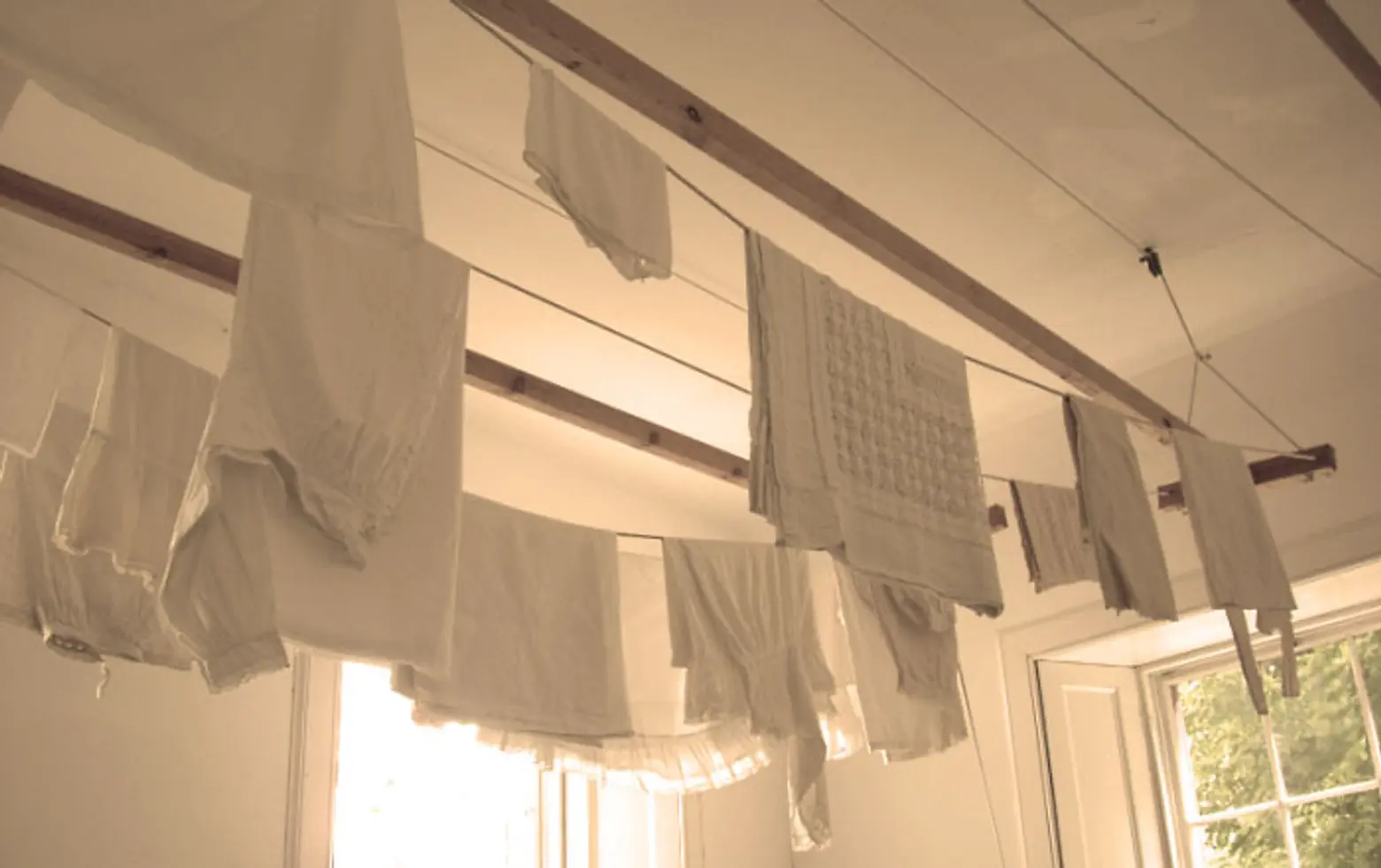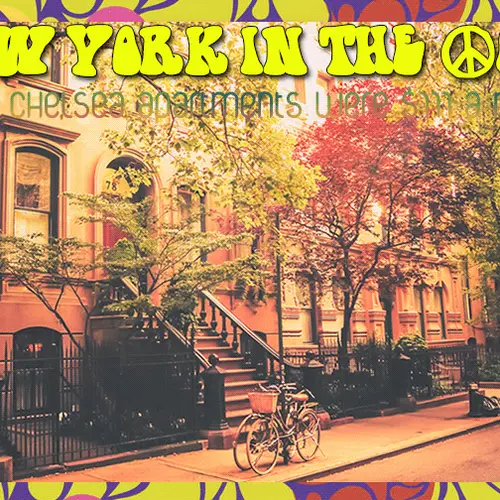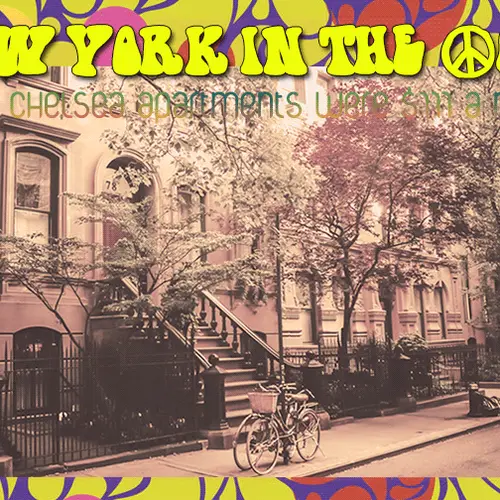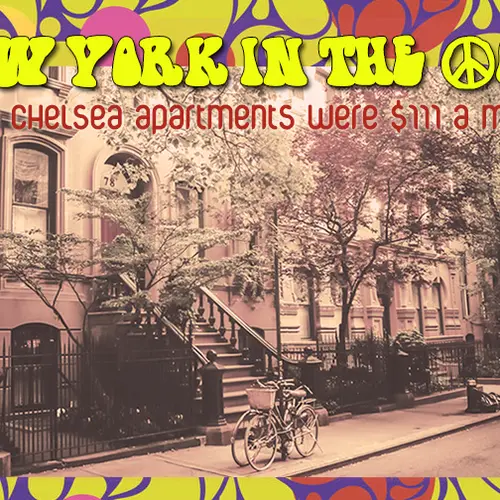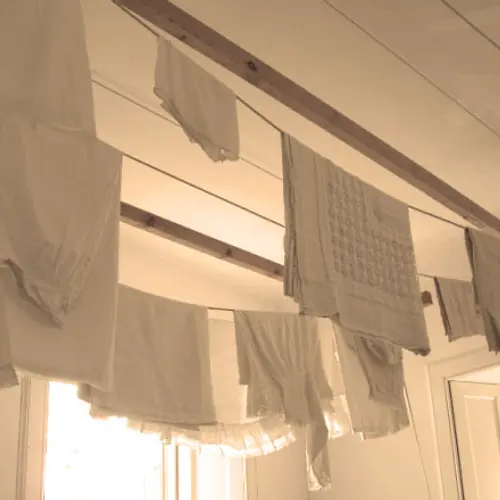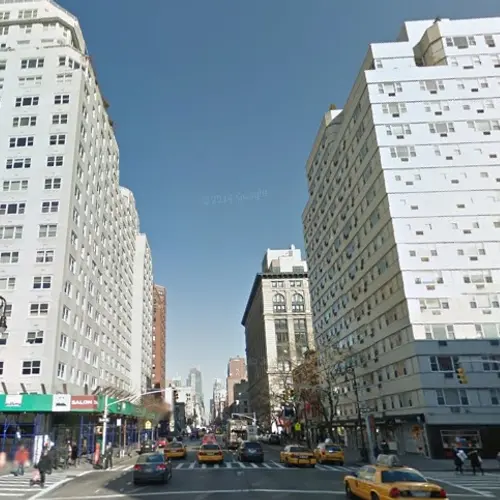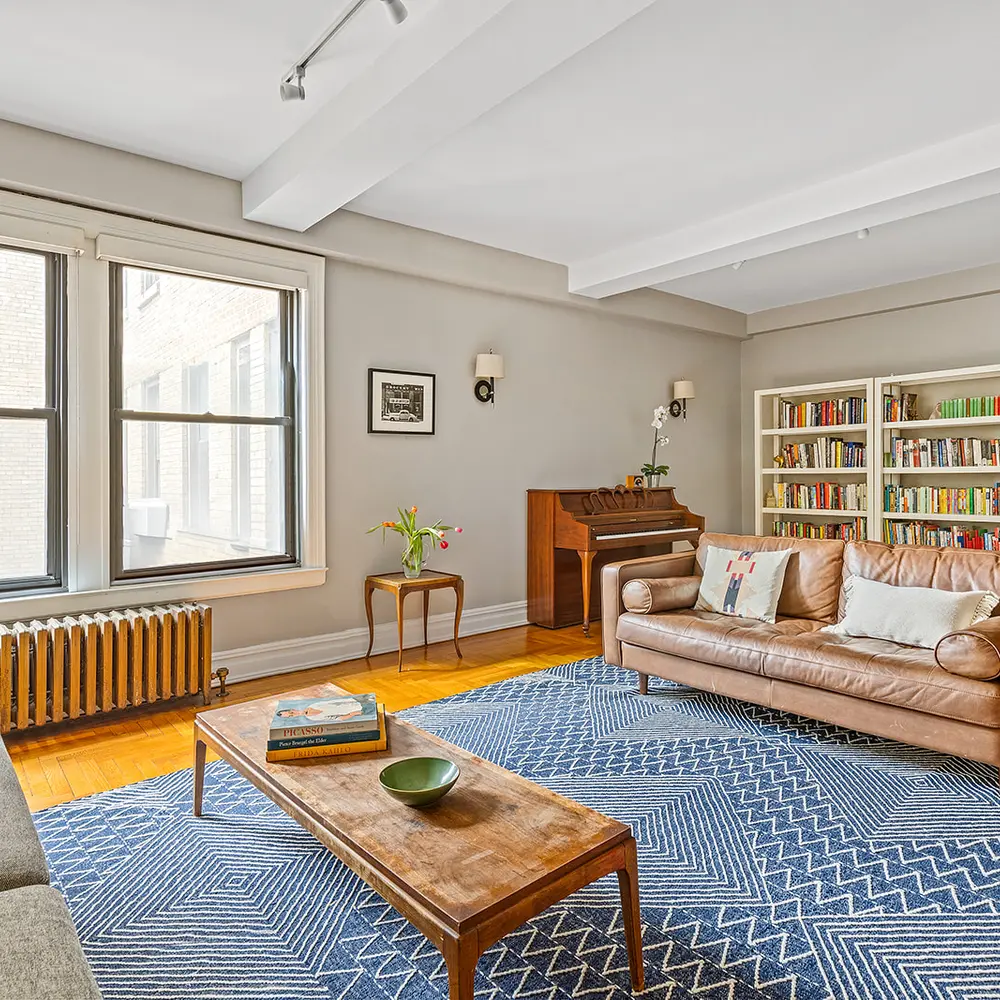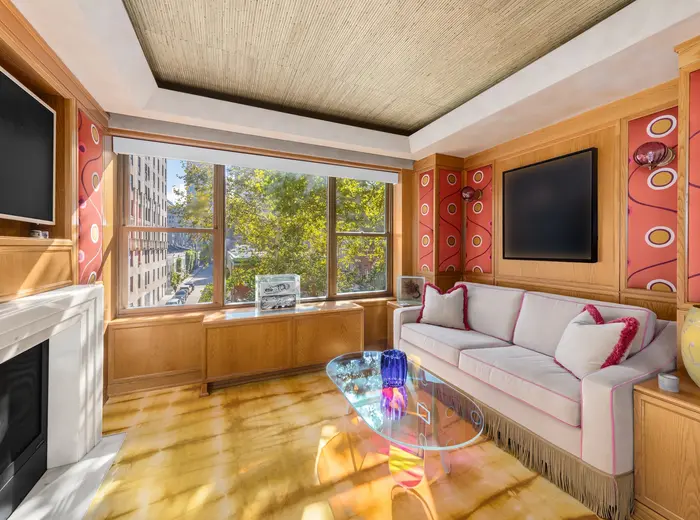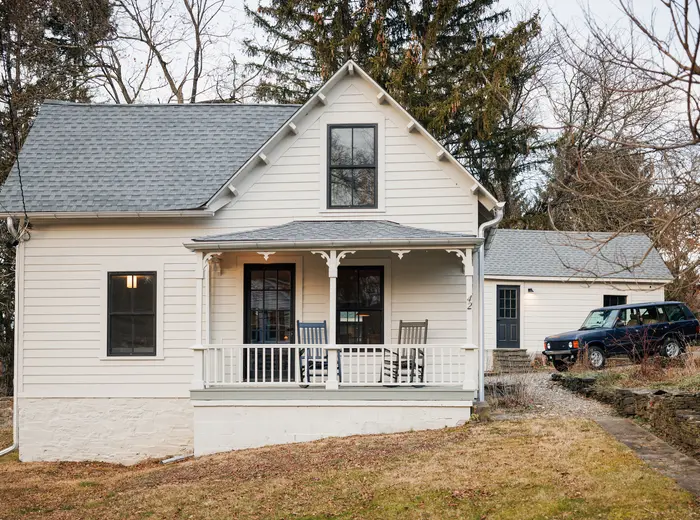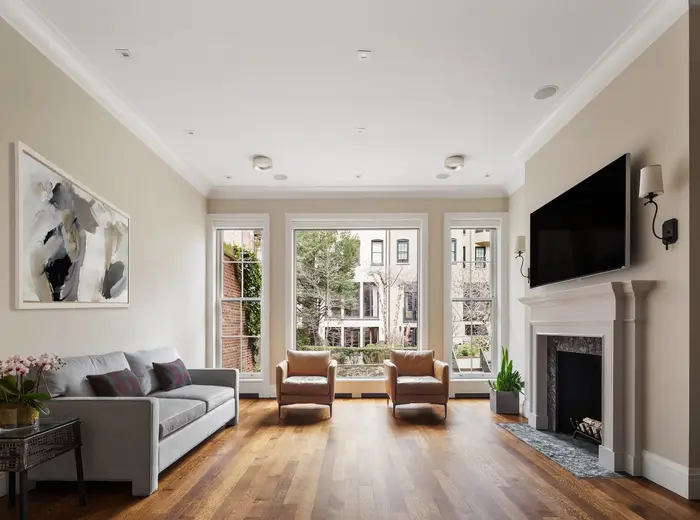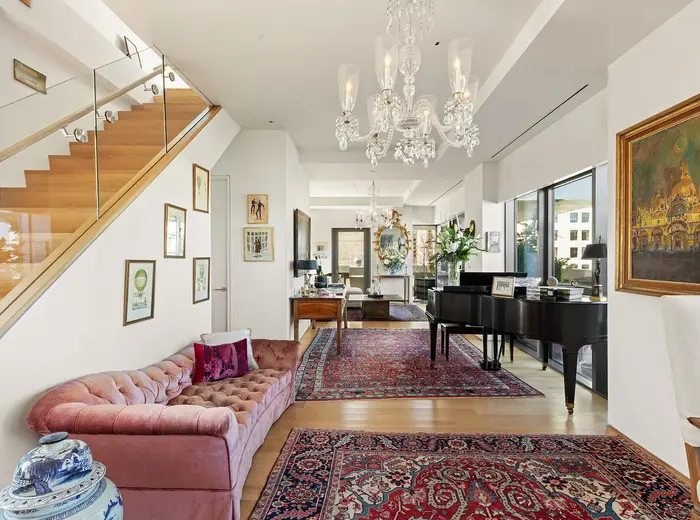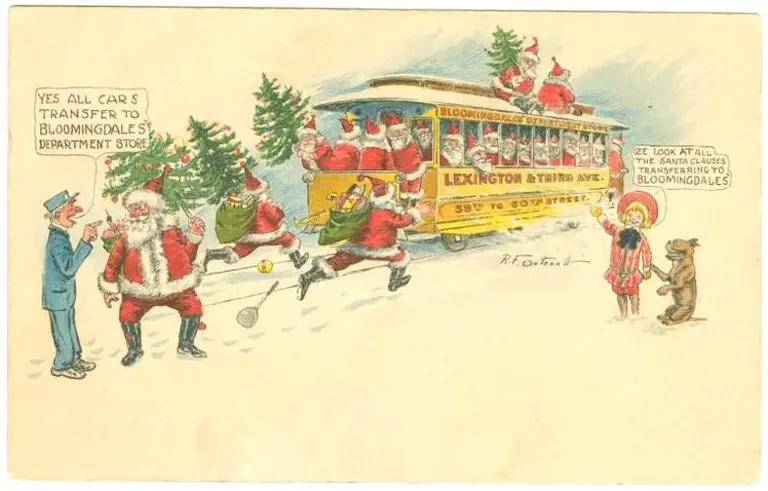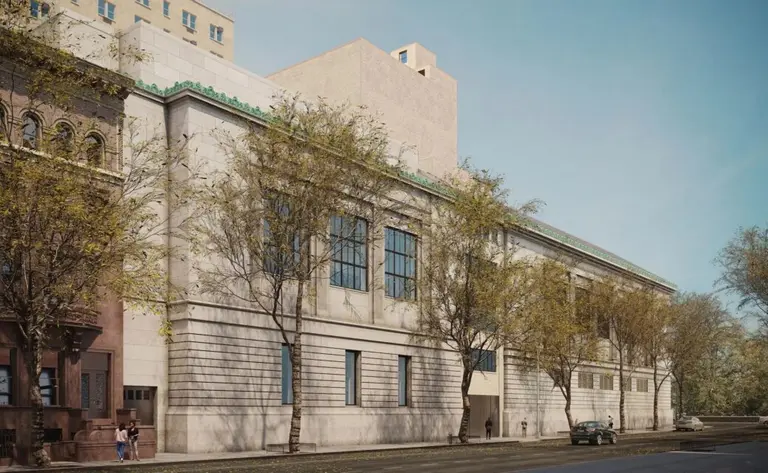New York in the ’60s: When Chelsea Apartments Were $111 a Month
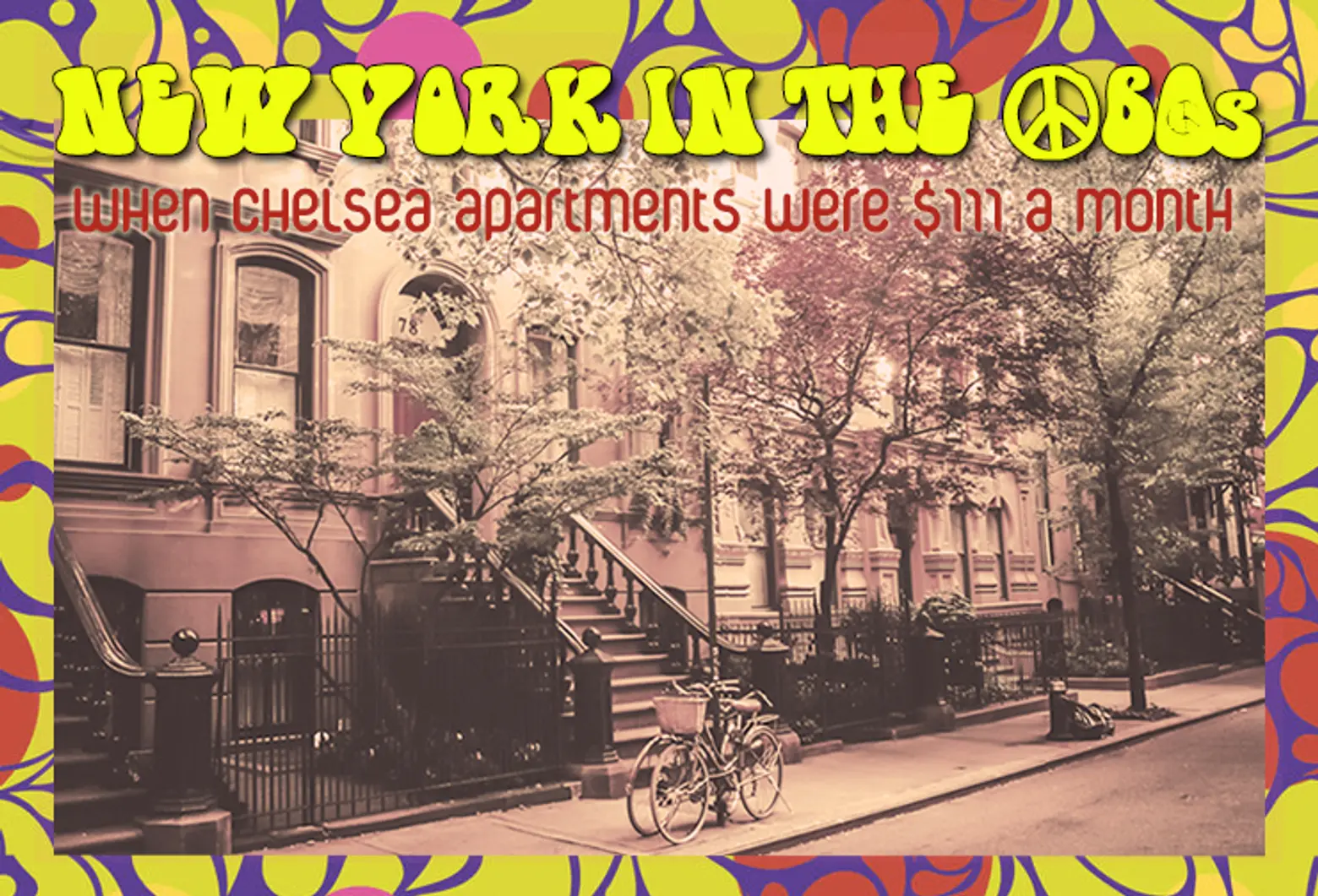
Photo via NY Through the Lens
Our series “New York in the ’60s” is a memoir by a longtime New Yorker who moved to the city after college in 1960. Each installment will take us through her journey during a pivotal decade. From $90/month apartments to working in the real “Mad Men” world, we’ll explore the city through the eyes of a spunky, driven female. In our first two installments we saw how different and similar house hunting was 50 years ago and visited her first apartment on the Upper East Side. Then, we learned about her career at an advertising magazine…looking in on the Donald Drapers of the time. In our fourth installment, we accompanied her to Fire Island during the warm summer months. Last time, our main character decided to make the big move downtown, but it wasn’t quite what she expected. Now she’ll take us through what it was like to live below 23rd street in the ’60s.
Finally she was ready to move. She pulled up the 9-by-12 thin, gray cotton rug in her old place and had it washed. It would fit the bedroom wall to wall. A 9-by-12 bedroom may be small by some standards, but she was thrilled to have a separate room—with a door!—to sleep in. The new place got painted with an oil-based white paint with umber added so it wouldn’t show the dirt readily—it started out grayish. The painter worked with a brush. Not allowed to use a roller, he said, the union forbade it because painters were paid by the hour, and a roller made the job go too fast. The living room had very nice parquet flooring that got a shellac finish and over time lots of wax, but nothing could quite change the fact that it sagged badly. The sag and the size of the room—it was about 10 by 14 feet—dictated that the furniture had to be placed around the edge, sort of pool-side, and a rug, a white Greek flokati rug, got pride of place in the middle. It did not level the floor by much, but it did cheer her up.
The kitchen had a drying rack hoisted up to the ceiling which tenants could pull down to dry their clothes on. It also had a big old light fixture with a cord extending down to where you could reach it and an outlet on the end so you could plug your iron in there, arrange the board underneath it, go to work and never have the cord get in your way. A dumbwaiter, now sealed, was another feature of the kitchen. Because it was closed up, it served as a roach run between the apartment upstairs and the one downstairs. The tenant upstairs couldn’t be bothered to take his garbage out and the one downstairs couldn’t see too well and never cleaned his apartment. No amount of spraying could rid the girl’s apartment of roaches because there was always a new generation ready to invade. Still, it was a wonderful kitchen and got decorated with yards of Contact paper. For years afterward she wondered how subsequent tenants would ever be able to remove it, or what it would look like if they gave up and simply painted over it. She mounted a shelf on the window and put plants on it, then hung cafe curtains below. The plants died because the kitchen, like the rest of the apartment, faced a courtyard and was dark.
Being told of her new apartment for $111 a month, the girl’s sister and her husband said that if a two-bedroom apartment in the building became available, they would like to hear about it. One did, and a few months later the young couple moved in. The three of them proceeded to do the sorts of things pals do— popping back and forth to each other’s apartments, dinner at a small Italian restaurant on Greenwich Avenue every Sunday evening followed by a movie at a theater on 12th Street and Greenwich Avenue, where the Equinox gym now is, and then a leisurely stroll home. Living arrangements for most people are not much different now than they were in the ’60s, so after seven or eight years, when the young couple had three children, they moved to the suburbs.
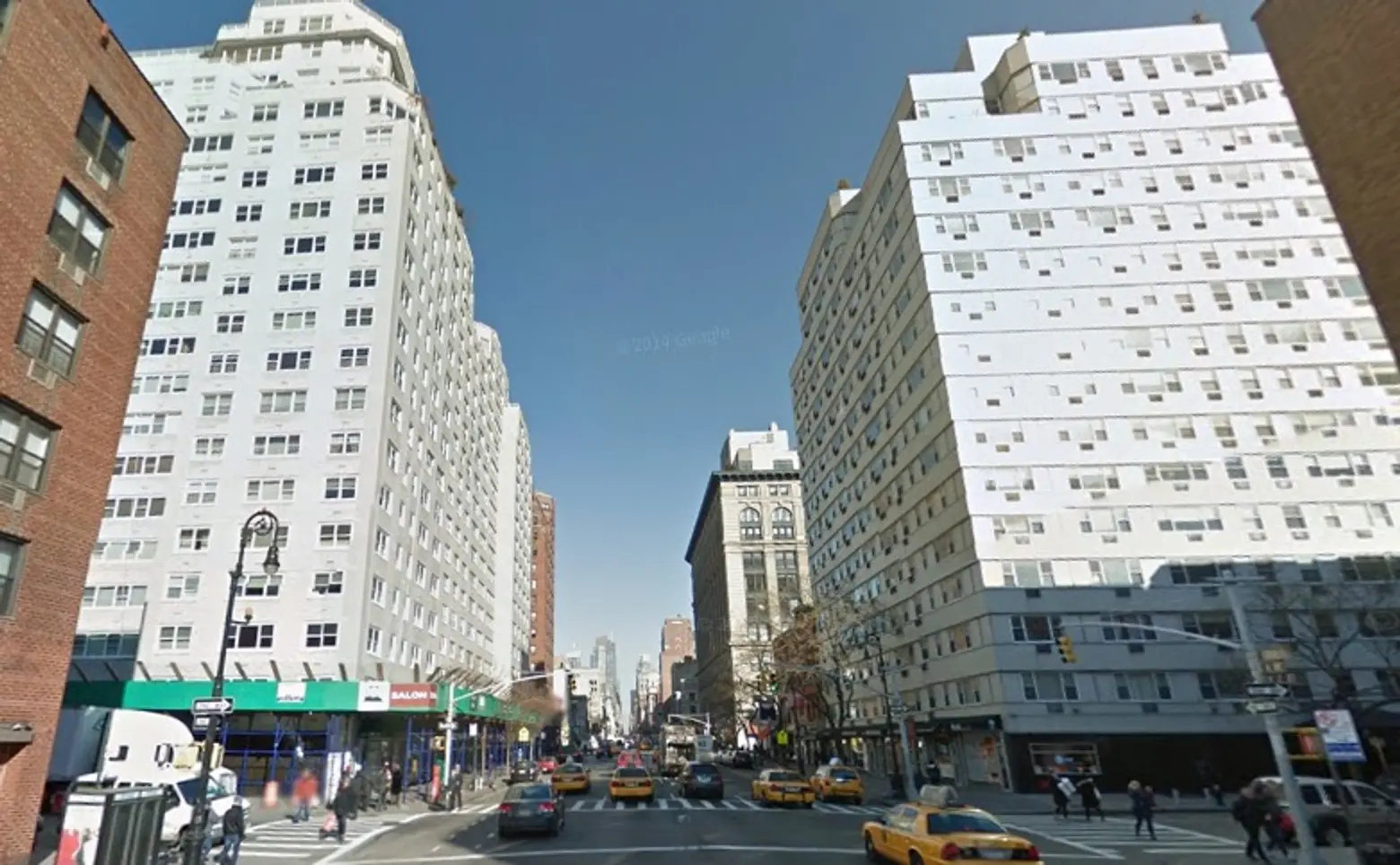
The white brick apartment buildings that still stand on 6th Avenue and 12th Street
White brick International Style buildings were going up all over Manhattan, especially on the Upper East Side, but downtown as well. They all advertised, “Coming soon! Modern, luxury apartment building!” A man she knew had a studio in a new white-brick building at 12th Street and 6th Avenue. It had a sleeping alcove, and the girl envied him because his parquet floor didn’t sag. His building, like many of its vintage, was re-clad recently in a more weather-worthy gray brick. Printers’ Ink’s art director and her husband, also an art director, had an apartment at 12th Street and Fifth Avenue that was like nothing the girl had ever seen. It had a sunken living room—but really sunken, by about eight feet. One wall of it was painted an intense teal blue, and the other rooms ringed it on the entry level.
One of the apartments the girl liked was rented by a guy whose memory is indelible because he invited her to crash the Russian Ball with him. Henry had figured out that every year there was an intermission in the festivities around 10 p.m. The plan was to dress for the event—a gorgeous long pink silk evening dress for the girl, black tie for Henry—park the car across Fifth Avenue from the Hotel Pierre where the event was being held, leave their coats in the car at 10 p.m., jaywalk across 5th Avenue and stroll into the hotel to mingle with the guests. His apartment was a one-bedroom at 9th Street and 5th Avenue with all rooms overlooking the avenue. In retrospect, it wasn’t that unusual, but it was more upscale and better maintained than the girl’s. The rent was also more than twice her own at something like $240, and therefore unattainable, so the best she could do was to hire Henry’s housekeeper, who came every other Wednesday morning and for $12 cleaned and waxed her apartment.
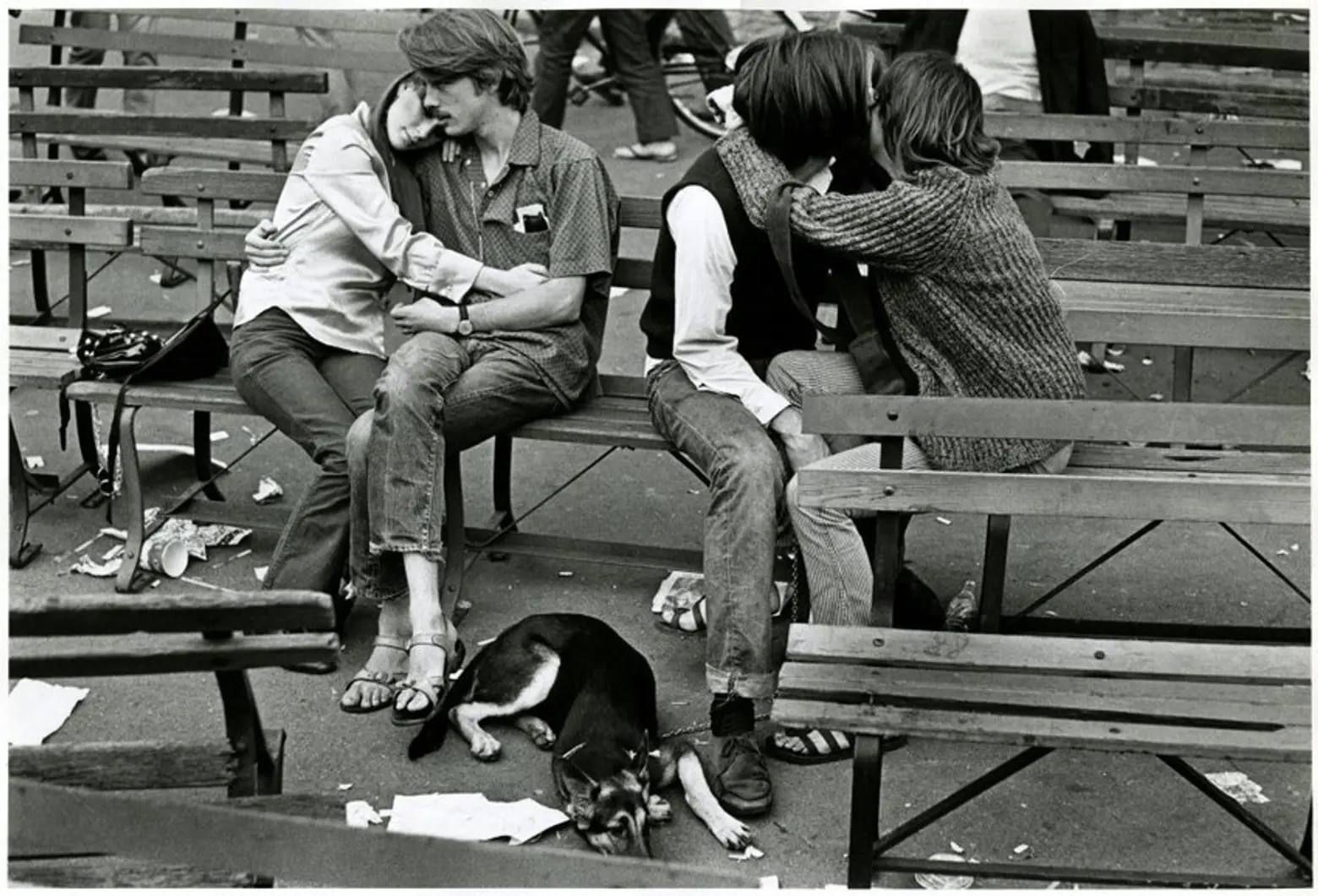
Tompkins Square Park in 1967 via James Jowers George Eastman House
Crime made some people move. Carol, for instance, rented a garden apartment on Tompkins Square Park, but the garden turned out to be accessible to burglars, and when she put a police lock on the garden door and bars on the two windows, the charm was locked out as well. Another friend, Jill, lived on Bleecker Street until she was mugged one evening on the way home from work—pushed into the building by a passerby who took her wallet. Ultimately Jill found a little place at 113 West 15th Street. It was in a back house, invisible from the street. You would enter the building through a small door apart from the main entrance to the building, walk down a narrow passage and come out the other side into a courtyard and find yourself looking at a completely different building. The place was really small. There was a central room, probably 11 feet square, and at one end of it was a closet into which a hot plate had been fitted. That was the kitchen. To wash dishes or get water to boil vegetables, one had to go to the tiny bathroom just to the right of the closet. There was a sort of alcove for sleeping, but not deep enough for a bed, so it stuck out into the main room.
Other people moved from one extraordinary place to another as though guided by a fairy godmother or good connections. Vicky’s mother had rented an apartment on the top floor of a back house at 21 Jones Street in the Village, and Vicky took it over from her. It was a separate house, like Jill’s, behind the main building and accessible by means of a long narrow hallway or “horsewalk” opening into a courtyard. The apartment was only one room, but bright enough for shade-loving plants, a couple of cats, a bed and a desk. Then Vicky met a man, and the two of them moved into the top floor of a two-story house on MacDougal Alley, which was even more magical. They got married and moved into an apartment on Bleecker Street between MacDougal and Sullivan Streets, the entire top floor, overlooking the MacDougal-Sullivan Gardens. All that and so near Washington Square Park—fairy godmothers rule!
+++
RELATED:
- New York in the ’60s: Apartment Hunting, Job Searching, and Starting Out in the Big City
- New York in the ’60s: Domestic Yearnings, Yorkville Hangouts and Bartenders
- New York in the ’60s: Being a Woman in Advertising During the ‘Mad Men’ Days
- New York in the ’60s: Beach Parties and Summer Houses on Fire Island
- New York in the ’60s: Moving Downtown Comes With Colorful Characters and Sex Parties
